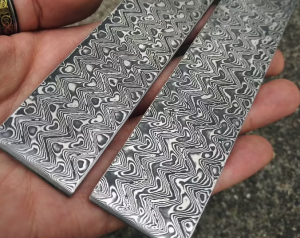Damascus steel, known for its distinctive patterning and exceptional strength, has a rich history that dates back to ancient times. The origins of Damascus steel can be traced back to the Middle East, specifically the city of Damascus in Syria, from which it gets its name. However, it was also produced in other regions such as India and Persia.
The method of creating Damascus steel was a closely guarded secret for centuries, passed down through generations of blacksmiths. The steel was made by layering different types of steel and iron, then heating and forging them together. The resulting steel had a unique patterning on its surface, caused by the layering of the different metals. This patterning, along with the steel’s exceptional strength, made it highly sought after for weapons such as knives, swords, and spearheads.
However, Damascus steel was not limited to just weapons. It was also used for a variety of other items such as construction equipment, farming tools, and even armor. The intricate patterns that appear on the surface of the steel were often used to decorate objects such as jewelry and religious items.
Despite its popularity, the method of creating Damascus steel was eventually lost to history. The exact reasons for this are not known, but it is believed that a combination of factors such as changes in technology and political instability in the region contributed to its decline. The last known production of Damascus steel is believed to have occurred in the 18th century.
Today, blacksmiths still produce knives and other items using techniques that attempt to replicate the characteristics of Damascus steel. These modern versions are often referred to as “Damascus-style” steel, but they are not true Damascus steel as the original formula of creating the steel is lost.
In conclusion, Damascus steel was a highly prized material that was used for a wide range of items beyond just weapons. Its origins can be traced back to the Middle East, but it was also produced in other regions. The method of creating this steel was a closely guarded secret for centuries, but eventually it was lost and today’s Damascus steel is not true Damascus steel.

